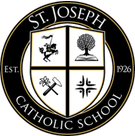Week at a Glance
October 2nd- October 6th
ELA
- To segment phonemes
- To understand the concept of consonant digraphs, keywords, and sounds: wh, ch, sh, th, ck
- To spell ck at the end of words
- To punctuate an asking sentence with a question mark
- To understand the narrative story form: character, setting, main events
- To read with accuracy and prosody
- To retell with picture notes and visualization
- To identify how pictures and captions communicate key details in My Librarian is a Camel
- To develop vocabulary knowledge of the word: mobile
- To write, speak, and illustrate how people in different countries borrow books
- To generate and answer questions about That Book Woman using key details from the text
- To generate a variety of adjectives
- To complete sentence frames
- To retell That Book Woman including key details about characters, settings, and major events
- To create Tableaux for the problem and resolution of the story
- To define multiple meanings for words poke and spell
- To identify the steps to finding the meaning of multiple- meaning words
MATH
- To build number sense with number of the day
- To discover ways to make 9 and 10
- To find missing parts of 10
- To determine if a math statement is true or false
SCIENCE
- To explore all of the different shapes of the Moon that can appear on different nights. In the activity, My Moon Book, students observe photos of the Moon taken over the course of four weeks and draw pictures of the Moon’s phases in their book. They use these observations to discover patterns in how the Moon’s shape changes and predict when the next full moon will appear.
SOCIAL STUDIES
- Explain what it means to play fairly and be a good sport.
- To identify similarities and differences among classmates
- To compare and contrast classmates’ personal preferences and talents
- To categorize classmates according to their special talents
- To analyze the costs and benefits of different choices
RELIGION
- To tell that God is Father to all of us
- To explain that we show love for one another in many ways
- To identify the Bible as God’s message to us


